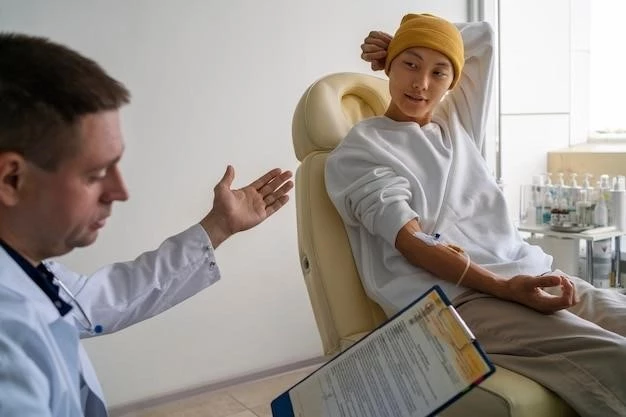Introduction
Ter Haar-Hamel-Hendricks Syndrome, also known as Frank-Ter Haar Syndrome, is a rare genetic disorder characterized by skeletal, cardiac, ocular, and craniofacial abnormalities.
Overview of Ter Haar–Hamel–Hendricks Syndrome
Ter Haar-Hamel-Hendricks Syndrome, also known as Frank-Ter Haar Syndrome, is a rare genetic disorder characterized by skeletal, cardiac, ocular, and craniofacial abnormalities. The condition is associated with features such as megalocornea, multiple skeletal anomalies, brachycephaly, wide fontanels, and developmental delay, with a common genetic defect being a mutation in the SH3PXD2B gene. This syndrome presents challenges in skeletal development, heart abnormalities, and eye conditions, impacting individuals’ overall health and well-being.

Clinical Features
Ter Haar-Hamel-Hendricks Syndrome presents a range of characteristic symptoms including skeletal anomalies, cardiac defects, ocular abnormalities, and craniofacial features.
Characteristic Symptoms of Ter Haar–Hamel–Hendricks Syndrome
Ter Haar-Hamel-Hendricks Syndrome presents a distinct set of symptoms that include megalocornea, skeletal anomalies, congenital heart defects, developmental delays, full cheeks, finger flexion deformities, and micrognathia. Patients may also exhibit brachycephaly, prominent eyes, and a wide anterior fontanel, with some cases showing glaucoma, hypertelorism, and protruding ears. The syndrome is also associated with variable phenotypic features such as kyphoscoliosis and coccygeal anomalies, contributing to the complexity of the condition.
Genetic Basis
The genetic basis of Ter Haar-Hamel-Hendricks Syndrome lies in mutations of the SH3PXD2B gene located on chromosome 5q35.1, leading to a spectrum of skeletal, cardiac, ocular, and craniofacial abnormalities.
SH3PXD2B Gene Mutation in Ter Haar–Hamel–Hendricks Syndrome
Ter Haar-Hamel-Hendricks Syndrome is primarily caused by mutations in the SH3PXD2B gene located on chromosome 5q35.1. This gene mutation contributes to the diverse array of skeletal, cardiac, ocular, and craniofacial abnormalities observed in individuals with this syndrome.

Diagnosis
Diagnosing Ter Haar-Hamel-Hendricks Syndrome involves a thorough clinical evaluation, genetic testing to detect mutations in the SH3PXD2B gene, and assessments of skeletal, cardiac, ocular, and craniofacial abnormalities.
Methods for Diagnosing Ter Haar–Hamel–Hendricks Syndrome
Diagnosing Ter Haar-Hamel-Hendricks Syndrome involves a combination of clinical assessments to identify skeletal, cardiac, ocular, and craniofacial abnormalities. Genetic testing is crucial for detecting mutations in the SH3PXD2B gene on chromosome 5q35.1, which is the primary genetic defect associated with the syndrome. Additionally, imaging studies such as X-rays, echocardiograms, and ocular examinations play a role in confirming the diagnosis and understanding the extent of the individual’s condition.
Prognosis
Individuals with Ter Haar-Hamel-Hendricks Syndrome face varied outcomes due to the spectrum of skeletal, cardiac, ocular, and craniofacial challenges associated with the condition.
Outlook for Individuals with Ter Haar–Hamel–Hendricks Syndrome
Individuals diagnosed with Ter Haar-Hamel-Hendricks Syndrome often face a challenging prognosis due to the complex nature of the skeletal, cardiac, ocular, and craniofacial abnormalities associated with the condition. Management strategies and supportive care play a crucial role in improving the quality of life for individuals affected by this syndrome. Ongoing research and advancements in medical understanding offer hope for potential treatment options and interventions to address the diverse symptoms and challenges presented by Ter Haar-Hamel-Hendricks Syndrome.
Treatment
Management strategies for Ter Haar-Hamel-Hendricks Syndrome focus on addressing the diverse array of skeletal, cardiac, ocular, and craniofacial abnormalities associated with the condition.
Management Strategies for Ter Haar–Hamel–Hendricks Syndrome
Patients with Ter Haar–Hamel–Hendricks Syndrome may benefit from a multidisciplinary approach to treatment involving specialists in orthopedics, cardiology, ophthalmology, and genetics. Management strategies focus on addressing individual symptoms such as skeletal anomalies, cardiac defects, ocular issues, and developmental delays. Treatment plans may include surgical interventions, cardiac monitoring, vision assessments, physical therapy, and genetic counseling to provide holistic care and support for affected individuals.
Research and Studies
Recent discoveries and findings on Ter Haar-Hamel-Hendricks Syndrome are advancing our understanding of the genetic and phenotypical spectrum of this rare disorder, shedding light on potential treatment avenues for affected individuals.
Recent Discoveries and Findings on Ter Haar–Hamel–Hendricks Syndrome
Recent studies have highlighted the underlying genetic mutations, particularly in the SH3PXD2B gene, as a key factor in the pathogenesis of Ter Haar–Hamel–Hendricks Syndrome. Research has focused on delineating the phenotypical spectrum of the disorder, identifying characteristic features such as megalocornea, skeletal anomalies, cardiac defects, and developmental delays. Additionally, advancements in understanding the role of podosomes and invadopodia formation in extracellular matrix remodeling have shed light on potential novel therapeutic targets for managing the varied clinical manifestations associated with this rare genetic syndrome.
Support and Resources
Available support networks provide assistance and guidance to individuals and families affected by Ter Haar-Hamel-Hendricks Syndrome, offering valuable resources and a sense of community.
Available Support Networks for Individuals and Families Affected by Ter Haar–Hamel–Hendricks Syndrome
Support networks and resources are instrumental in providing assistance and guidance to individuals and families navigating the complexities of Ter Haar–Hamel–Hendricks Syndrome. These networks offer valuable information, emotional support, and opportunities to connect with others facing similar challenges. By fostering a sense of community and understanding, these support networks play a crucial role in empowering individuals affected by the syndrome and their families to navigate the journey with strength and resilience.
Ter Haar-Hamel-Hendricks Syndrome, with its complex array of skeletal, cardiac, ocular, and craniofacial manifestations, remains a challenging genetic disorder requiring ongoing research and support for affected individuals.
Summary of Key Points Regarding Ter Haar–Hamel–Hendricks Syndrome
Ter Haar-Hamel-Hendricks Syndrome is a rare genetic disorder characterized by a spectrum of skeletal, cardiac, ocular, and craniofacial abnormalities associated with mutations in the SH3PXD2B gene. The condition presents challenges such as megalocornea, developmental delays, and skeletal anomalies, requiring multidisciplinary management to address the diverse clinical manifestations and improve the quality of life for affected individuals.
